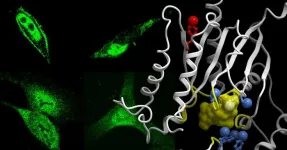(Press-News.org) (COLUMBUS, Ohio) – While cervical spine injuries (CSI) are uncommon in children, they can be potentially devastating, resulting in quadriplegia – paralysis below the neck affecting both arms and both legs. Detecting CSIs in a clinical setting often requires imaging such as X-rays and computed tomography (CT) scans, both of which expose children to radiation, which can cause other health issues over time.
In a study published today in The Lancet Child & Adolescent Health, researchers in the Pediatric Emergency Care Applied Research Network (PECARN) – led by Julie Leonard, MD, MPH at Nationwide Children’s Hospital –created a highly accurate cervical spine injury prediction rule. When applied, the rule decreases the use of CT by more than 50% without missing clinically significant injuries or increasing normal X-ray use.
“Emergency medical professionals prioritize thoroughness to ensure no serious injuries are overlooked, a crucial aspect in caring for every trauma patient,” said Dr. Leonard, an emergency medicine physician at Nationwide Children’s. “However, we also understand the age-related radiation sensitivity and malignancy risk caused by use of CT, and we’re very encouraged that this new prediction rule could reduce some of that unnecessary exposure.”
The study required the collaboration of 18 children’s hospitals to enroll more than 22,000 study participants over a period of three years. The resulting PECARN CSI prediction rule is easy for physicians to use, relying solely on a child’s symptoms and physical examination upon arrival in the emergency department. The prediction consists of nine clinical findings, four of which designate a child as “high-risk” for CSI and appropriate for initial screening with CT.
“More research needs to be completed to determine how best to implement this rule into community emergency department settings, where most children are evaluated after trauma” said Dr. Leonard, who is the principal investigator of the Great Lakes Atlantic Children’s Emergency Research node (GLACiER) of the PECARN. “We are hoping that this rule can empower families to collaborate even more closely with their children’s care teams for better clinical outcomes.”
About the Great Lakes Atlantic Children’s Emergency Research (GLACiER) Node of the Pediatric Emergency Care Applied Research Network (PECARN)
GLACiER is one of seven nodes nationwide funded for research in pediatric emergency care, part of PECARN. The node includes Nationwide Children’s Hospital (Columbus, OH), University of Pittsburgh Medical Center Children’s Hospital of Pittsburgh (Pittsburgh, PA), and Nemours Children’s Hospital (Wilmington, DE). PECARN conducts high-quality, multicenter research into the prevention and management of acute illnesses and injuries in children. Its research spans across the continuum of emergency care from prehospital to hospital settings. PECARN is funded by the federal Emergency Medical Services for Children (EMSC) program, part of the Health Resources and Services Administration. EMSC aims to ensure that—no matter where a child lives—the health systems in their area provide quality emergency care services. More information about GLACiER is available at NationwideChildrens.org/Specialties/Emergency-Services/Pecarn.
This study was funded by the Eunice Kennedy Shriver National Institute of Child Health and Human Development (NICHD; 5R01HD091347 Development and Testing of a Pediatric Cervical Spine Injury Risk Assessment Tool)
Federal funding statement: PECARN is supported by the Health Resources and Services Administration (HRSA) of the U.S. Department of Health and Human Services (HHS) as part of awards totaling $4,950,000 with 0% financed with non-governmental sources. The contents are those of the author(s) and do not necessarily represent the official views of, nor an endorsement, by HRSA, HHS, or the U.S. Government. For more information, visit HRSA.gov.
NOTE TO JOURNALISTS: Post-embargo access to the study can be found here.
About The Abigail Wexner Research Institute at Nationwide Children's Hospital
Named to the Top 10 Honor Roll on U.S. News & World Report’s 2023-24 list of “Best Children’s Hospitals,” Nationwide Children’s Hospital is one of America’s largest not-for-profit free-standing pediatric health care systems providing unique expertise in pediatric population health, behavioral health, genomics and health equity as the next frontiers in pediatric medicine, leading to best outcomes for the health of the whole child. Integrated clinical and research programs are part of what allows Nationwide Children’s to advance its unique model of care. As home to the Department of Pediatrics of The Ohio State University College of Medicine, Nationwide Children’s faculty train the next generation of pediatricians, scientists and pediatric specialists. The Abigail Wexner Research Institute at Nationwide Children’s Hospital is one of the Top 10 National Institutes of Health-funded free-standing pediatric research facilities in the U.S., supporting basic, clinical, translational, behavioral and population health research. The AWRI is comprised of multidisciplinary Centers of Emphasis paired with advanced infrastructure supporting capabilities such as technology commercialization for discoveries; gene- and cell-based therapies; and genome sequencing and analysis. More information is available at NationwideChildrens.org/Research.
-30-
END
University of Leeds press release
UNDER EMBARGO UNTIL 00.01 UK BST, 5 JUNE 2024 (19.01 US ET, 4 JUNE 2024)
The second annual Indicators of Global Climate Change report, which is led by the University of Leeds, reveals that human-induced warming has risen to 1.19 °C over the past decade (2014-2023) – an increase from the 1.14 °C seen in 2013-2022 (set out in last year’s report).
Looking at 2023 in isolation, warming caused by human activity reached 1.3 °C. This ...
Housing associations are being urged to step out of their traditional role to deliver change in deprived areas and help people into work or entrepreneurship.
The call comes in a whitepaper published today by the University of East Anglia (UEA), written in response to how the UK levelling up policy agenda has so far failed to deliver results for constituents in the communities it is designed to help.
It follows a £10.8M Increase Valorisation Sociale (INCREASE VS) project, which showed how housing associations can go ...
Participants reacted quicker and made fewer errors during menstruation, despite believing their performance would be worse, according to new research from UCL and the Institute of Sport, Exercise & Health (ISEH).
The study, published in Neuropsychologia, is the first to assess sport-related cognition during the menstrual cycle and is part of a larger research project supported by the FIFA Research Scholarship.
The findings act as a proof-of-principle that specific types of cognition fluctuate throughout the ...
Large Language Models behind popular generative AI platforms like ChatGPT gave different answers when asked to respond to the same reasoning test and didn’t improve when given additional context, finds a new study from researchers at UCL.
The study, published in Royal Society Open Science, tested the most advanced Large Language Models (LLMs) using cognitive psychology tests to gauge their capacity for reasoning. The results highlight the importance of understanding how these AIs ‘think’ before entrusting them with tasks, particularly those involving decision-making.
In recent years, the LLMs ...
June 4, 2024
UMass Amherst to Join $90M US National Science Foundation large-scale research infrastructure for education
Platform brings together institutions, digital learning and a world-class team to enable research studies to inform efficacy, improvement and innovation in teaching and learning
AMHERST, Mass. – The Manning College of Information and Computer Sciences at the University of Massachusetts Amherst has joined the newly announced U.S. National Science Foundation’s (NSF) SafeInsights, a five-year, $90 million research and development infrastructure for inclusive education ...
For the first time, researchers have identified a group of neurons deep in the brain that are associated directly with compulsive eating and food craving. The discovery is reported in an article published in Nature Communications by researchers at the University of California, Los Angeles (UCLA) in the United States and the Federal University of the ABC (UFABC) in São Bernardo do Campo, São Paulo state (Brazil).
The neurons are located in the periaqueductal gray, a region of the midbrain at the top of the brainstem, and are known as vesicular ...
College Park, Md. — Engineers at the University of Maryland (UMD) have developed a model that combines machine learning and collaborative robotics to overcome challenges in the design of materials used in wearable green tech.
Led by Po-Yen Chen, assistant professor in UMD's Department of Chemical and Biomolecular Engineering, the accelerated method to create aerogel materials used in wearable heating applications – published June 1 in the journal Nature Communications – could automate design processes for new materials.
Similar to water-based ...
A group of researchers at University of California San Diego has identified the cause of a “short-circuit” in cellular pathways, a discovery that sheds new light on the genesis of a number of human diseases.
The recent study, published in the journal Science Signaling, explores the biochemical mechanism that can interrupt the cellular communication chain — a disruptive interaction that Pradipta Ghosh, M.D., likens to a game-ending “buzzer.” Ghosh, a professor in the Departments of Medicine and Cellular and Molecular Medicine ...
URBANA, Ill. – Talking to their parents about daily stressors can help adolescents deal with their problems. This is particularly important during the transition to middle school, when youth often are faced with new peer and academic challenges. But does it matter where these conversations take place? That’s the topic of a new study from the University of Illinois Urbana-Champaign.
“We were interested in the environmental settings for mother-youth conversations. Where do they typically happen, and what are the preferred locations? We wanted to get the perspectives of both the youth and their ...
Immunotherapy is based on harnessing a person’s own immune system to attack cancer cells. However, patients with certain tumors do not respond to these therapies and it remains unclear why.
“The full impact of anti-cancer immunotherapy has not been realized, especially for some solid tumors,” says Kevin Tharp, Ph.D., assistant professor in the Cancer Metabolism and Microenvironment Program at Sanford Burnham Prebys.
Researchers presume that part of the reason why these therapies fail is due to tumor-associated fibrosis, the creation of a thick layer of fibrous collagen (like scar tissue) that acts as a barrier ...



